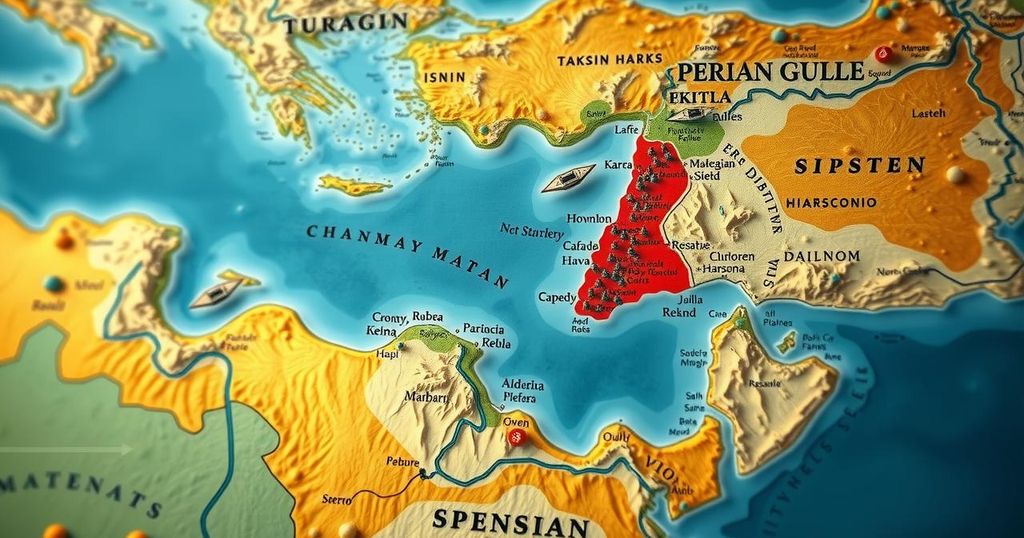Iran is citing 19th-century British maps to support its claim over three disputed islands in the Gulf, amid increasing diplomatic tensions with the UAE, particularly after the EU’s condemnation of Iranian occupation. The islands are considered strategically vital, and the dispute complicates Iran’s efforts to improve relations in the region and with the EU.
Recent tensions between Iran and Gulf states regarding the ownership of three strategic islands are escalating, as Iran references British maps from the 19th century to bolster its claims. The dispute over these islands, significant for their location at the entrance of the Strait of Hormuz, complicates Iran’s diplomatic efforts with neighboring countries and the European Union. The UAE has intensified its claim, supported by the EU’s condemnation of Iranian occupation, which it argues violates international law. Three islands—Abu Musa, Greater Tunb, and Lesser Tunb—are at the center of this longstanding conflict. According to Iranian diplomats, maps dating back to 1888 depict these islands as Iranian territory, while the UAE asserts that they historically belonged to the Qasimi dynasty. Following the British withdrawal in 1971, Iran seized the Tunbs and has since maintained control over Abu Musa. Diplomatic negotiations for third-party arbitration have stalled, leaving military presence and territorial claims unresolved. The situation worsened following the EU-GCC summit, which recognized the UAE’s position and criticized Iran’s actions. In response, Iranian officials have expressed outrage and emphasized their sovereignty over the islands. Officials are now keen to strengthen ties with Gulf states amid rising geopolitical tensions but face internal challenges stemming from historical grievances and national pride.
The ownership dispute between Iran and the United Arab Emirates over the islands of Abu Musa, Greater Tunb, and Lesser Tunb has been ongoing for over five decades. Historically significant, these islands lie at a crucial point on the maritime route for oil tankers from the Gulf to the Gulf of Oman. The geopolitical stakes are high, as the Strait of Hormuz is a vital transit point for global oil supplies. The disagreement intensified after recent statements from the EU supported the UAE’s claims, complicating Iran’s aspirations for closer relations with both Gulf partners and the European Union. This rising tension reflects broader regional dynamics, including Iran’s shifting foreign policy aimed at countering perceived threats, such as those posed by Israel.
In conclusion, the dispute over the three islands remains a point of contention between Iran and the UAE, exacerbated by recent support from the EU for the UAE’s claims. Iran’s reliance on historical British maps illustrates its attempts to substantiate its territorial claims during a period of heightened diplomatic tension. Despite pursuing closer ties with Gulf states, Iran faces both external pressure and significant internal sentiment regarding its sovereignty over the islands.
Original Source: www.theguardian.com






